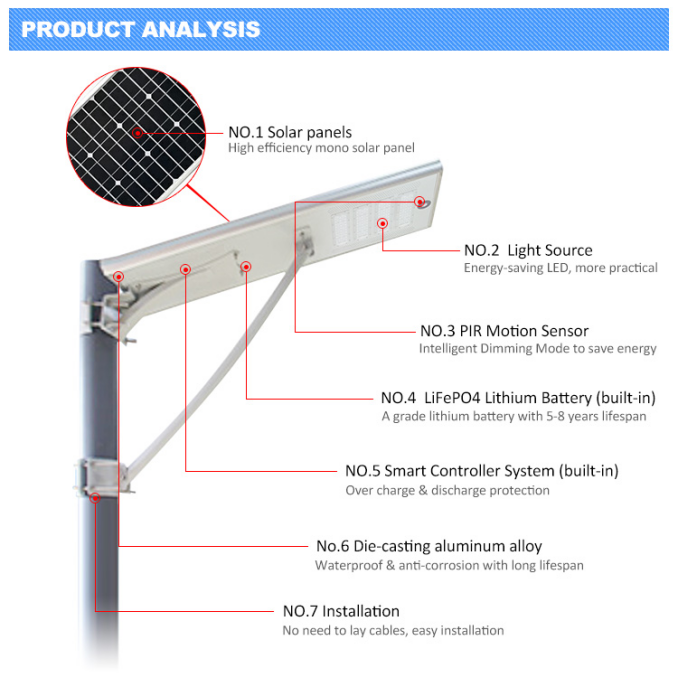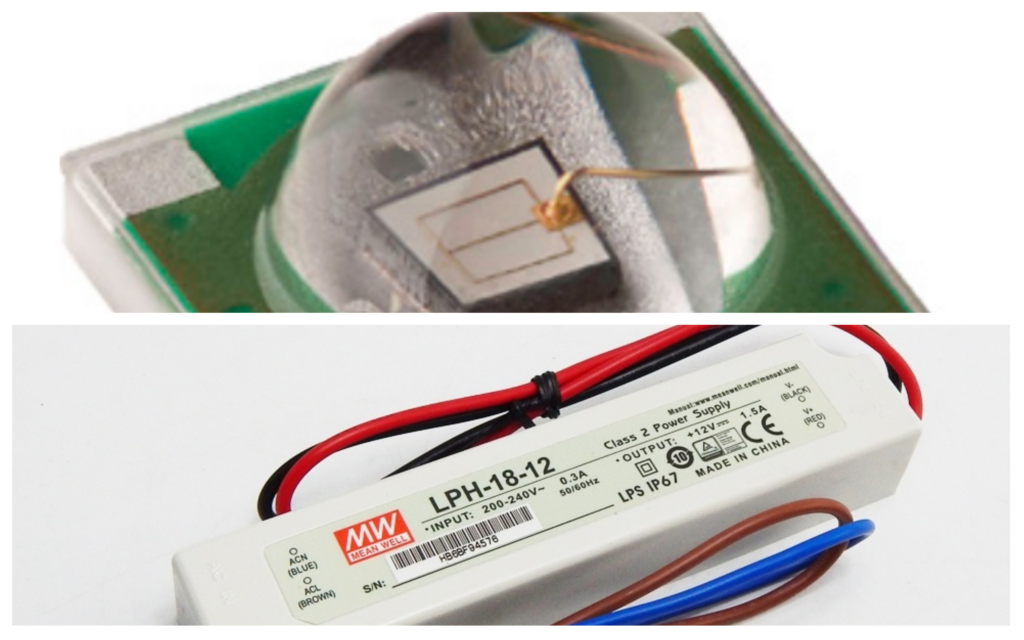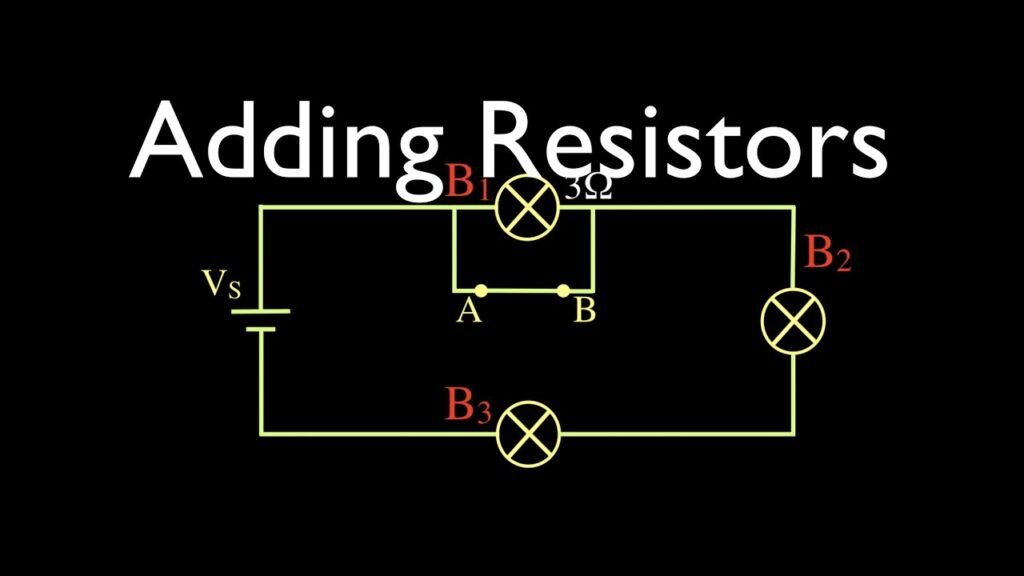To facilitate you to better understand the article, in understanding why the light bulbs series resistance, I would like to give you a little bit of knowledge about resistance.
First of all, what is resistance? Why do lights need resistors? What effect does the resistor have on the LED ball? So the next thing to talk about is what resistance has to do with the light bulb.
Simply put, resistance is the resistance that an electric current encounters in a circuit, or the ability of an object to obstruct that current.
The LED bulb is not necessarily equal to the power supply voltage. The general power supply voltage will be slightly higher than the light bulb voltage. At this point need to add series resistance to reduce voltage and current limit to maintain normal work to prevent LED lights burn out. So What’s the resistance.
1. Low power red and yellow, its resistance = voltage/current = 1.8/0.02 = 90Ω.
2. Low Power Blue Green, its resistance = voltage/current = 3.2/0.02 = 160Ω.
3. High power red and yellow, its resistance = voltage/current = 2.2/0.35 = 6Ω.
4. High Power Blue Green, its resistance = voltage/current = 3.4/0.35 = 10Ω.
Resistance is a physical quantity, in physics, the amount by which a conductor impedes the flow of current. Its English name is resistance, commonly abbreviated as R. It is a basic property of a conductor, and the size of the conductor, materials, and temperature. The greater the resistance of the conductor, the greater the resistance of the conductor to the current.

ENE TECH LED All In One Solar Streetlight
Different conductors have different resistances.
The basic unit of resistance is the ohm, denoted by the Greek letter “Omega”. Ohm’s law states that the relationship between voltage, current, and resistance is i = u/r, or R = U/i. The resistance value of a resistance element is generally related to temperature, material, length, and cross-sectional area.
The physical quantity to measure the effect of temperature on resistance is the temperature coefficient, which is defined as the percentage change in the resistance value for every 1 °C increase in temperature.
The main physical characteristic of resistance is to convert electrical energy into heat energy, it can also be said that it is an energy-consuming element, the current through it to produce internal energy. The resistance usually acts as a voltage and current divider in a circuit. For signals, both AC and DC signals can pass through resistors.
However, in daily work, led lamp beads are more series resistant, than led lamp beads why do series resistant? There are three main reasons.
First, to better protect the LED lights.
What do you mean? Because LED has a working voltage limit, exceeds working voltage, positive PN junction current is too large, easy to burn out LED, so need a series resistance to protect LED.
In the early days, in 1962, LEDs emitted only low-light red light, and then other monochromatic lights. Today’s LEDs emit visible, infrared, and ultraviolet light, the luminosity is also raised to high brightness or even super brightness.
And the LED lamp bead uses for the first time as the indicator light, the display board, the general lighting, the medical device, and so on. The LED bulb, on the other hand, is essentially a light-emitting device that emits energy through a combination of electrons and holes to efficiently convert electrical energy into light energy, but because the LED bulb has a working voltage limit that exceeds the working voltage, positive PN junction current is too large, easy to burn LED lights, so you need to series a resistor.
Second, the LED lights add resistance to reduce the operating current.
LED light beads do not have to add resistance, if the power supply is constant current can not use resistance. But because LED Nonlinear elements, sensitive to power and voltage, can not be controlled in a voltage manner, mainly by controlling the brightness of LED lights in a current manner, adding resistance is to limit the current adding resistance will affect the efficiency of LED light pearlescent conversion, low-power LED lights can ignore the loss of resistance, and high-power LED lights are usually directly used constant current power supply.

Third, LED lights plus resistance, in the final analysis, is because if you do not add resistance, LED lights because the working current will cause PN junction heating serious, burn out PN junction.
Too high a voltage will lead to too high a current, and the optical decay will increase. Shortens the life of light bulbs.
Speaking of which, do you understand why the LED bulb needs resistance?
Led beads are a low-current, low-voltage electronic component. But our market is usually 220 volts or 110 volts in Hong Kong. And according to the voltage and current characteristics, the number of LED lights in series, voltage added parallel, and the current increases.
Therefore, to better match the driving power supply, general LED lights are used in series. For example, an LED bead 3528 is about 3 volts, and 103528 beads in series are 10 times 3 volts, 30 volts. So, in this case, we can use a series of LED lights, and then add resistance to use.
Why, after all, are LED lights connected in series with resistors? Is to limit the current, is to protect LED lights, is to avoid LED lights because the current is too large to make the PN junction heating serious, burned PN junction.
As a result, the components on which we attach resistors to light bulbs are often called current limiting resistors. Of course, this is just a more popular name, to let us better understand the meaning of the LED lamp bead series resistance.
Finally, does this knowledge help you? If you need help or want to know more about LED lights, please feel free to leave us a message in the discussion area or contact us in the following ways. Best wishes to you
Website: www. enetcl.com
Whatsapp: +86 158 7620 7215
Email: sales1@enetcl.com




